Rugs Around the World: How Cultural Traditions Influence Cleaning Methods
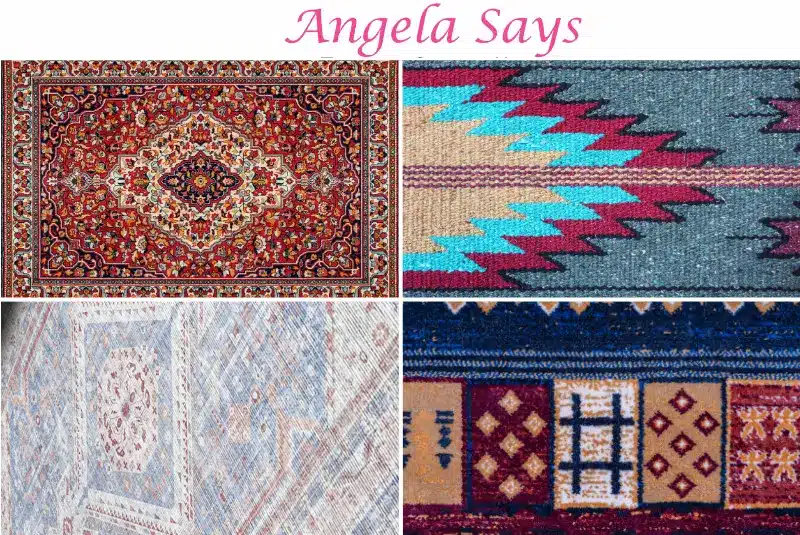
Rugs are far more than just decorative pieces beneath our feet — they are living works of art that carry centuries of tradition, history, and meaning. From the intricate knots of Persian masterpieces to the bold designs of Navajo weavings, each rug tells a story that goes beyond fabric and dye. What many don’t realize is that the way these rugs are cared for and cleaned has also been shaped by culture, climate, and heritage.
At KIWI Services, we’ve spent over 40 years preserving and cleaning rugs from around the world. We understand that each style requires more than just technical expertise — it demands respect for the cultural traditions that underpin it. In this article, we’ll explore how different civilizations have developed unique rug cleaning practices and why those traditions still influence modern professional care today.
The Cultural Significance of Rugs Globally
Rugs have always been much more than practical floor coverings. In many parts of the world, they symbolize status, spirituality, and even storytelling. A Persian rug may represent generations of craftsmanship and financial investment, while a Navajo rug can embody spiritual meaning and ancestral heritage. In Morocco, rugs often reflect hospitality, featuring bold patterns that brighten everyday life. Oriental rugs, on the other hand, carry motifs that represent prosperity, luck, or protection.
Because rugs hold such deep cultural value, the cleaning methods developed for them weren’t only about removing dirt. They were about honoring the artistry of the weaver, protecting delicate fibers and dyes, and ensuring that these priceless textiles could be passed down from one generation to the next.
Persian Rugs – Ancient Beauty and Gentle Care
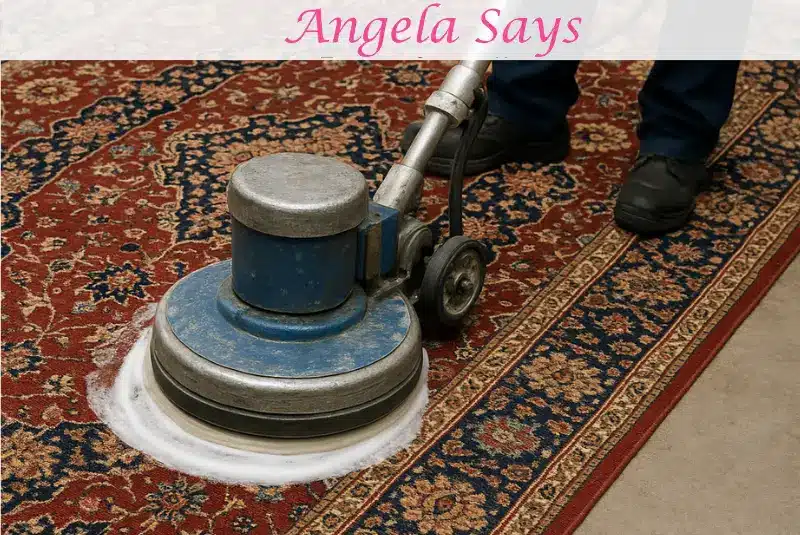
Few rugs are as admired and cherished as Persian rugs. Known for their intricate patterns, rich colors, and meticulous hand-knotting, these textiles have been treasured in homes and palaces for centuries. A single Persian rug can take months or even years to complete, making it not only a household centerpiece but also a valuable heirloom passed down through generations.
Traditionally, Persian rug owners treated these masterpieces with the utmost care. Cleaning often involved hand-washing with mild natural soaps, rinsing with fresh water, and laying rugs in the open air to dry under the sun. Families understood that harsh scrubbing or the use of chemicals could damage the delicate fibers, cause dyes to bleed, or weaken the knots that held the design together.
Modern rug cleaning carries forward that same spirit of respect. At KIWI Services, we avoid harsh chemicals and instead use pH-balanced, eco-friendly solutions designed to preserve natural dyes while gently lifting dirt. Just as traditional artisans emphasized patience and gentleness, our professional process ensures that each Persian rug is handled individually, inspected for colorfastness, and cleaned in a way that safeguards both its beauty and value.
For homeowners, this careful balance means a Persian rug can retain its brilliance, strength, and artistry for decades to come, reflecting the timeless traditions from which it was born.
Navajo Rugs – Spiritual Craft and Careful Handling
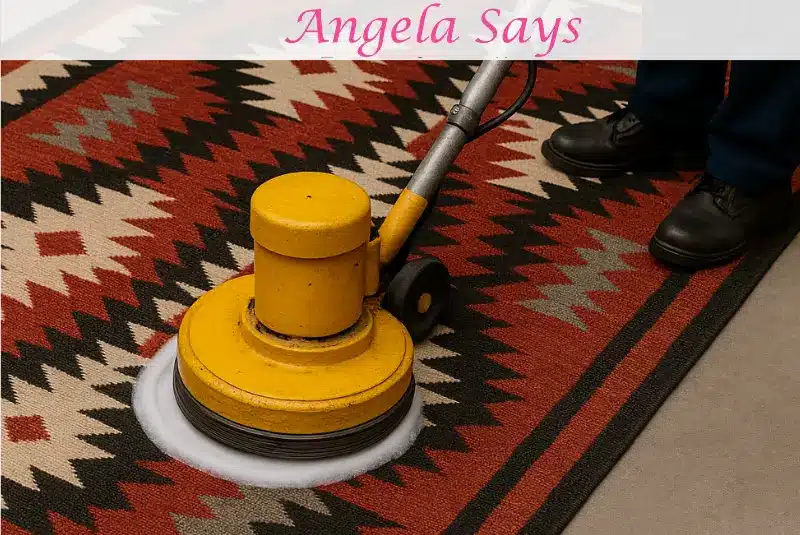
Navajo rugs hold a special place in American history and culture. Handwoven by Navajo artisans, these rugs are not just floor coverings — they are expressions of identity, spirituality, and heritage. Each pattern, symbol, and color tells a story, often connected to nature, balance, and tradition. Because they are woven from hand-spun wool and dyed with natural pigments, Navajo rugs are both durable and delicate, requiring a unique approach to care.
Traditionally, Navajo rugs were maintained through gentle dusting, hand-brushing, and minimal exposure to water. Families avoided heavy washing to protect the natural fibers and dyes. Instead, rugs were hung outside and lightly beaten to release dust or gently aired to refresh the wool. Harsh detergents or soaking were considered harmful, as they could distort the weave or cause irreversible dye bleeding.
Today, these same concerns remain. At KIWI Services, we respect the traditional methods by using specialized dusting equipment that vibrates trapped particles loose without pulling or damaging the fibers. For deeper cleaning, we use controlled low-moisture techniques that remove dirt while preserving the rug’s structure and natural dyes. Every Navajo rug that comes through our doors is treated as a piece of living history — handled with the care and reverence it deserves.
For homeowners who own Navajo rugs, professional cleaning is essential to ensure these treasured textiles remain vibrant and strong, thereby preserving their cultural and spiritual significance for generations.
Oriental & Chinese Rugs – Symbolism and Silk Protection
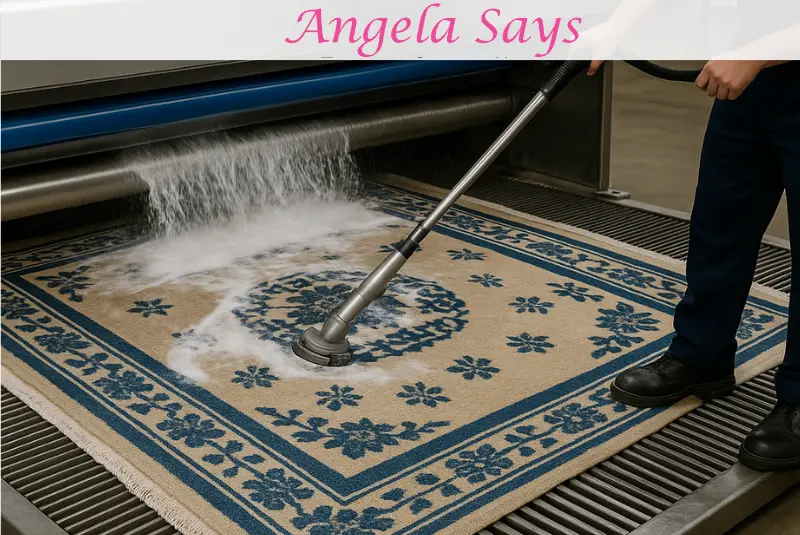
Oriental and Chinese rugs are renowned not only for their craftsmanship but also for the deep symbolism woven into their designs. From intricate dragons symbolizing power and prosperity to floral motifs representing harmony and renewal, these rugs serve as both decorative art and cultural storytelling. Many of them are woven with silk or a silk-and-wool blend, which adds brilliance and softness but also creates a greater need for delicate handling.
Traditionally, these rugs were cleaned using gentle water rinses and soft-bristled brushes. Families often relied on mild, natural soaps and careful hand-washing to protect the fine threads. Because silk fibers are highly sensitive, harsh scrubbing or strong chemicals were strictly avoided. After washing, the rugs were laid flat to dry, ensuring that their shape and texture were preserved.
Modern care continues this tradition of delicacy. At KIWI Services, we treat Oriental and Chinese rugs with the same respect their makers intended. Our cleaning process includes a fiber analysis before cleaning begins, ensuring that silk threads or fragile dyes are protected. We use silk-safe, eco-friendly solutions that gently lift dirt and restore luster without risking color bleeding or fiber weakening. To prevent warping, rugs are dried in climate-controlled conditions rather than in direct sunlight.
For homeowners, this combination of cultural awareness and modern expertise ensures that Oriental rugs and Chinese rugs retain their symbolic beauty and luxurious texture — continuing to serve as both art and heritage pieces for decades to come.
Moroccan & Berber Rugs – Tribal Traditions and Sand Dusting
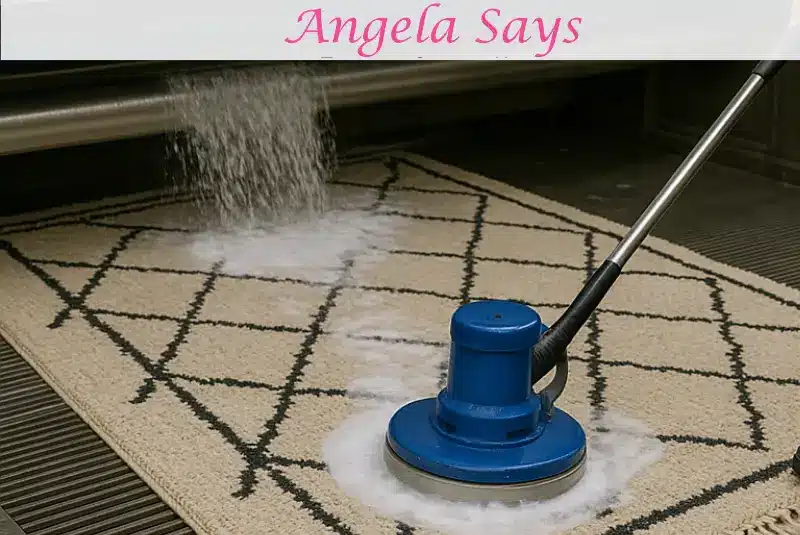
Moroccan and Berber rugs are celebrated for their bold, geometric patterns and thick, cozy textures. Woven by hand in the Atlas Mountains, these rugs often reflect the tribal identity, family heritage, and everyday life of their makers. Beyond their visual appeal, they also carry cultural meaning, as they have long been used in Moroccan homes to provide warmth, comfort, and a sense of hospitality.
Due to their origins in desert regions, traditional cleaning practices were adapted to the local environment. Families would beat rugs in the open air to release sand and dust, sometimes leaving them outside to freshen under the sun. In many cases, rugs were scrubbed with mild soaps and rinsed in flowing water sources, then air-dried over rocks or flat surfaces. This simple but effective method helped maintain the wool’s resilience and softness, while preserving the rug’s tribal patterns.
Modern care requires a similar focus on deep soil removal, but with more precision. At KIWI Services, our process often begins with professional rug dusting, a technique that vibrates embedded particles out of the fibers without causing stress or pulling. Because Berber and Moroccan rugs tend to have thick piles or long strands, regular vacuuming isn’t enough — hidden dirt and grit can stay trapped deep inside and shorten the rug’s lifespan. Our cleaning solutions gently wash and restore these rugs, while controlled drying ensures their shape and texture remain intact.
For homeowners, professional cleaning not only preserves the unique cultural identity of Moroccan and Berber rugs but also helps them maintain their plush feel and striking patterns for years to come.
Turkish & Anatolian Rugs – History in Every Knot
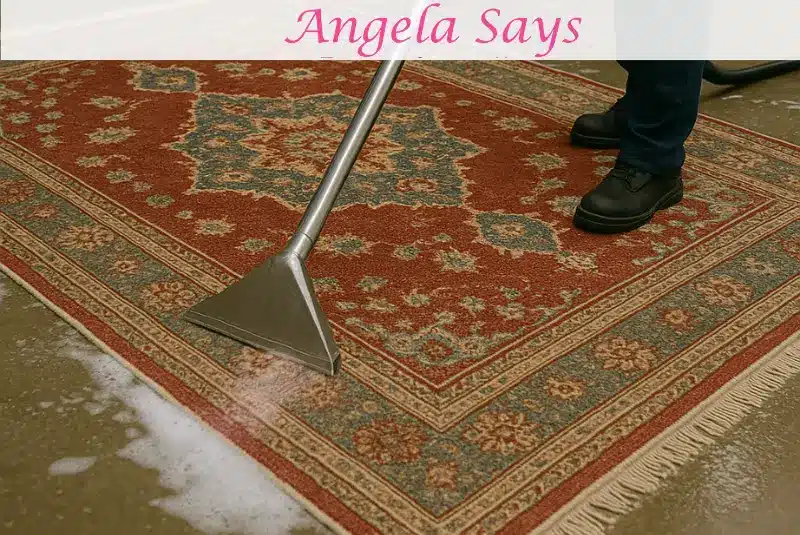
Turkish and Anatolian rugs are among the most storied in the world, known for their double-knot weaving technique (the Ghiordes knot) that gives them exceptional strength and durability. Rich in bold colors, medallion motifs, and geometric borders, these rugs have long been woven into Turkish culture as symbols of hospitality, faith, and artistic expression. In many households, they were prized family possessions, passed down as heirlooms to reflect heritage and craftsmanship.
Traditionally, families cleaned these rugs with methods rooted in simplicity and natural care. Rugs were often washed in rivers or with olive oil–based soaps, then laid flat in the sun to dry. The natural oils in the soap helped nourish the fibers, while careful rinsing and air drying ensured that the rugs retained their shape and vibrancy. This process required patience and respect, as rushing the drying phase could lead to warping or mildew.
Modern cleaning techniques carry on this respect for tradition while adding scientific precision. At KIWI Services, we replicate that same gentle approach by using citrus-based cleaners that are safe for dyes and fibers, while our controlled drying system prevents the risks associated with outdoor sun drying. Each Turkish rug is inspected individually, ensuring that its bold colors and intricate knots are preserved for long-term beauty.
For homeowners, entrusting a Turkish or Anatolian rug to professionals ensures that these works of art continue to tell their stories — knot by knot — while staying as vibrant and resilient as the day they were woven.
Modern Interpretations – Balancing Tradition with Innovation
While traditional rug care practices were shaped by environment, resources, and cultural values, today’s professional cleaning methods are designed to honor those traditions while adding modern precision and safety. The goal is the same as it was centuries ago: to preserve the artistry, protect delicate fibers, and ensure rugs last for generations.
At KIWI Services, we take inspiration from these cultural practices and combine them with state-of-the-art techniques. For example:
- Just as Persians relied on gentle soaps and sunlight, we use eco-friendly, pH-balanced solutions and climate-controlled drying rooms to protect natural dyes.
- Similar to Navajo traditions of dusting and careful handling, we utilize advanced rug dusting technology to safely remove dirt and debris without stressing the fibers.
- Like Moroccan families who aired rugs outdoors, we focus on deep soil removal while ensuring controlled drying that prevents warping or mildew.
- In place of traditional Turkish methods using olive oil soaps, our citrus-based solutions offer natural cleaning power with modern efficiency.
This balance between tradition and innovation allows us to clean each rug not just as a fabric, but as a cultural artifact. Whether the rug is made of silk, wool, natural fibers, or handwoven with symbolic designs, our 16-step rug cleaning process ensures it receives the specialized attention it deserves.
By respecting the heritage behind each rug while using advanced tools, KIWI helps homeowners protect their investments, honor cultural traditions, and enjoy the beauty of their rugs for decades to come.
Why Professional Care Matters for Cultural Rugs
Owning a cultural or handmade rug is a privilege, but it also comes with responsibility. These rugs are often woven with natural dyes, delicate fibers, and traditional knotting techniques that make them highly valuable yet vulnerable. While it may be tempting to try DIY cleaning methods, household vacuums, store-bought detergents, or steam machines can actually do more harm than good.
Risks of DIY Cleaning
- Color Bleeding: Strong chemicals or excessive water can cause dyes to bleed, potentially permanently damaging intricate designs.
- Fiber Damage: Harsh scrubbing or exposure to high heat can weaken wool and silk, leading to fraying or thinning.
- Structural Issues: Over-wetting can cause shrinkage, warping, or unraveling of hand-knotted rugs.
- Value Loss: Antique or heirloom rugs lose both beauty and financial value if improperly cleaned.
Benefits of Professional Rug Care
- Expert Analysis: Each rug is inspected for fiber type, dye stability, and condition before cleaning.
- Gentle, Customized Cleaning: Our processes are tailored to the rug’s cultural origin and material.
- Advanced Tools: Rug dusting machines, controlled moisture methods, and eco-friendly solutions preserve the integrity of your rugs.
- Longevity: Professional care can extend a rug’s lifespan by decades, preserving its beauty and investment value.
- Guarantees & Peace of Mind: At KIWI Services, every rug benefits from our 40+ years of expertise, 16-step cleaning process, and 30-day 100% satisfaction guarantee.
Entrusting cultural rugs to experts means they are treated with the same respect their makers intended, combining time-honored traditions with modern protection.
Conclusion: Preserving Tradition Through Modern Rug Care
Rugs represent more than simple home décor — they embody centuries of tradition, cultural identity, and artistic mastery. From Persian and Navajo to Oriental, Moroccan, and Turkish designs, each weaving tradition reflects not only craftsmanship but also the cleaning and preservation methods shaped by its culture.
While traditional care practices relied on natural resources and techniques passed down through generations, modern professional rug cleaning builds upon those foundations with advanced methods that protect fibers, dyes, and intricate designs. This balance ensures that rugs remain both functional and beautiful, allowing them to continue telling their cultural stories for decades to come.
By respecting the origins of each rug and using thoughtful cleaning practices, homeowners can safeguard these treasures and pass them on as enduring symbols of art, heritage, and history.
Frequently Asked Questions
Yes. Cultural rugs, such as those from Persian, Navajo, Oriental, Moroccan, and Turkish styles, are crafted with unique fibers, dyes, and weaving techniques. Each requires its own cleaning approach to prevent damage. For example, silk rugs demand delicate care, while thick Berber rugs need deep dusting. Understanding these differences helps preserve beauty and value.
Handmade and antique rugs are vulnerable to damage if cleaned incorrectly. Harsh detergents, scrubbing, or steam cleaning can cause dyes to bleed, fibers to weaken, or knots to loosen. Once damaged, these rugs lose both their appearance and cultural significance. Professional care ensures safe cleaning that protects delicate craftsmanship.
Most cultural rugs benefit from professional cleaning every one to three years. The frequency depends on factors like foot traffic, pets, and dust exposure. Regular cleaning not only removes dirt but also protects fibers from long-term wear. Consistently caring for rugs ensures they remain vibrant and last for generations.
Professional cleaning can revive colors dulled by dirt and grime, but the restoration of the rug depends on its condition. While fading caused by sun exposure may be permanent, dirt buildup can be lifted. Many services also offer repairs such as reweaving, fringe replacement, and dye correction to restore the rug’s overall beauty.
The safest way to preserve cultural rugs is through gentle cleaning, proper storage, and protection from moisture and direct sunlight. Using rug pads can reduce wear, while rotating rugs helps prevent uneven fading. Professional cleaning ensures that delicate fibers and dyes are protected, extending both cultural and functional value.
